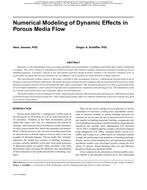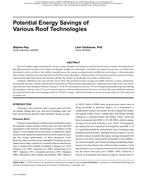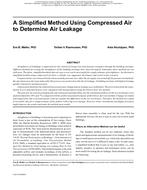-
-
Available Formats
- Options
- Availability
- Priced From ( in USD )
-
Available Formats
-
- Immediate download
-
$16.00Members pay $12.00
- Add to Cart
Customers Who Bought This Also Bought
-

Buildings XI Conference -- Numerical Modeling of Dynamic ...
Priced From $16.00 -

Buildings XI Conference -- Potential Energy Savings of Va...
Priced From $16.00 -

Buildings XI Conference -- A Simplified Method Using Comp...
Priced From $16.00 -

Thermal Performance of the Exterior Envelopes of Whole Bu...
Priced From $142.00
About This Item
Full Description
Every building is unique; however, performance testing identified in typical project specifications usually approaches the building enclosure in the same manner. Similarly, a predefined commissioning plan will not likely be appropriate for every project. Commissioning, similar to the design and construction of a building enclosure, is a dynamic and complex process; responsive to the Owner's Project Requirements (OPR), the design, the function, and the occupant needs. The process must be tailored to suit and adaptable.
The building enclosure commissioning process is defined by the design and the construction phases. The construction phase validates the design phase. A commissioning plan's construction phase must respond to the unique attributes of each design detail by establishing a comprehensive schedule of tests and reviews. The objective is to ensure the building enclosure performs in accordance with the OPR and functions as both a coordinated whole and separate components.
This paper briefly outlines the building commissioning plan from project inception through occupancy. Various approaches to the design phase of the commissioning plan are examined. Through the use of case studies, the construction phase of a building enclosure commissioning plan is reviewed. The case studies focus on the parameters for defining the testing type, extent, and methodologies utilized to conduct the schedule of tests in addition to lessons learned from the commissioning of these case study buildings.





